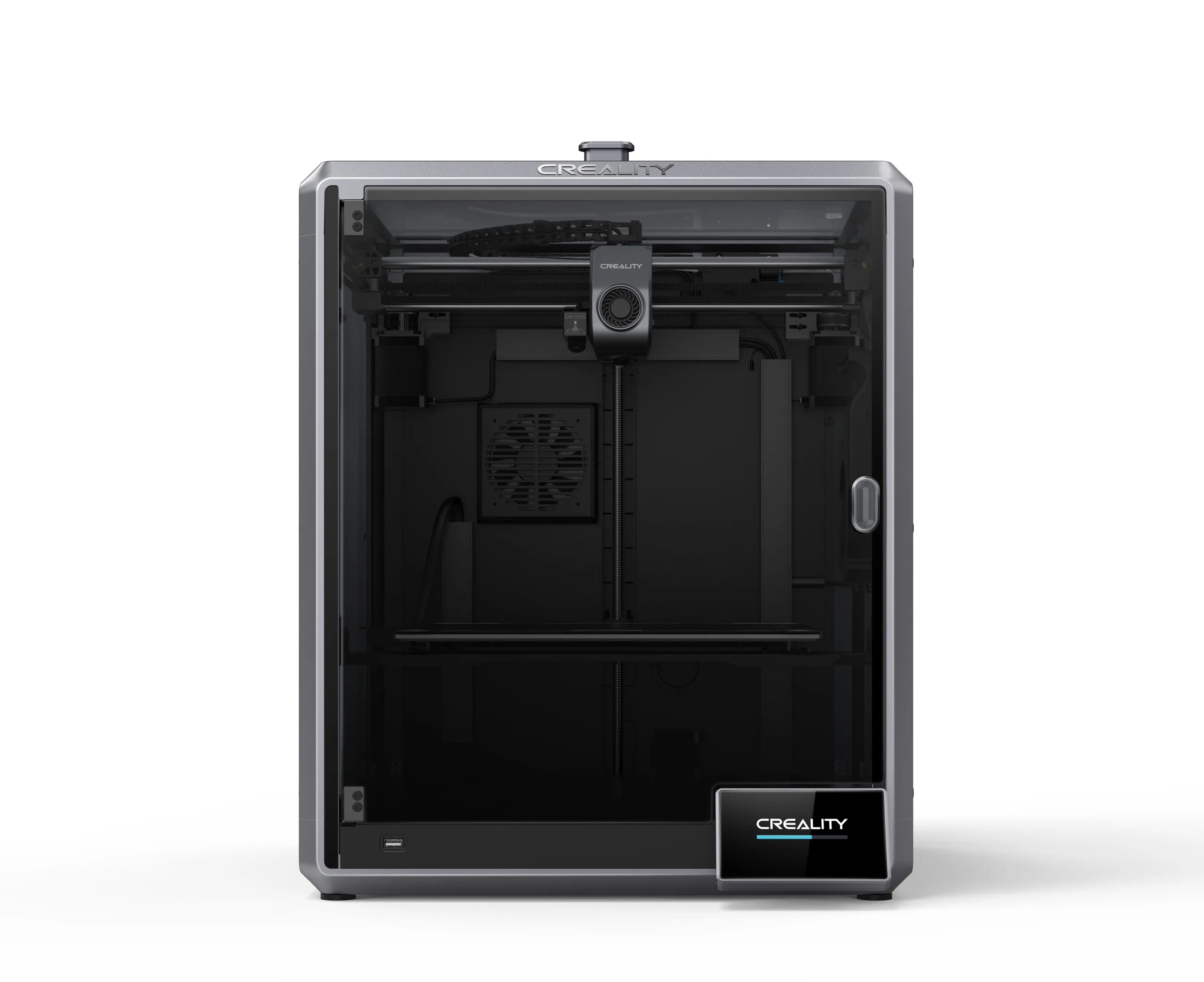Compare K1 Max vs H2D
Comparison between the best 3D printers
Choose the best 3D printer at the best price. The cheapest 3D printers are here.
Buy a 3D printer here with 3D Fila.
 |
 |
|
| Model | K1 Max[BUY K1 Max] |
H2D |
| Printing Material | Filament | Filament |
| Buy Filament for Creality 3D K1 Max | Buy Filament forBambu Lab H2D | |
| Estimated price | $1300,00 | $1899,00 |
| Manufacturer | Creality 3D | Bambu Lab |
| Release Year | 2023 | 2025 |
| Print Volume [mm] | 300x300x300 | 350x320x325 |
| Printer Size [mm] | 435x462x526 | 492x514x626 |
| Weight [kg] | 18 | 42,3 |
| Power Loss Recovery | YES | YES |
| Enclosed printer | YES | YES |
| Bed Leveling | Automatic | Automatic |
| Filament End Sensor | YES | YES |
| Bed type | Heated | Heated |
| Power supply system | Direct Drive | Direct Drive |
| Standard nozzle | 0,4 | 0,4 |
| Maximum Nozzle Temperature [°C] | 300 | 350 |
| Maximum Bed Temperature [°C] | 100 | 120 |
| Maximum printing speed [mm/s] | 600 | 600 |
| Filament holder | YES | YES |
| Camera for supervision | YES | YES |
| Recommended filaments | ABS, PLA, PETG, TPU, PA, ASA, PC, PLA-CF, PA-CF, PET-CF | PLA, PETG, ABS, ASA, TPU, PVA, Nylon (PA) |
| Recommended slicers | Creality Print, Cura, Simplify, Slic3r, IdeaMaker e outros | Bambu Studio |
| Maximum Resolution [mm] | 0,1 | 0,01 |
| Processor | ||
| Display | Display touchscreen 4,3'' | Touchscreen 5'' |
| Power Supply | ||
| Connectivity | USB / Wi-Fi / Ethernet | Wifi, Bambu bus, Cartão SD |
| Operating systems | Windows, Mac, Linux | Windows, Mac, Linux |
| Date of registration in the system | 2023-12-01 | 2025-03-31 |
| Release date | 2023 | 2025 |
| Extra features | The Creality K1 Max stands out as a fast Core XY 3D printer with a large build volume of 300 x 300 x 300 mm. It is fully enclosed and equipped with AI sensors to prevent print failures. This model has a smooth and flexible PEI build platform, and uses an automatic leveling system with LIDAR, as well as a filament run-out sensor. LAN, Creality Cloud and USB Flash Disk connectivity are available, as well as a 4.3-inch touchscreen interface. The K1 Max is robust, weighing in at 18 kg, and includes an AI camera and limited version of the Klipper firmware. Its motion system is solid and the printer is efficient with high-temperature filaments, but it is not silent. Assembly is 99% complete, requiring only minor adjustments before use. | Bambu Labs H2D combines high-speed 3D printing with a chamber heated up to 65 °C, dual extrusion with automatic nozzle switching, an AMS for filament drying and exchange, and AI sensors that detect failures. It offers optional laser and digital cutting capabilities, features intelligent calibration through computer vision, vibration control, enhanced fire safety, and real-time camera monitoring. |
| Support for multiple colors and materials (AMS and CFS) | NO | YES |
Notes * |
||
| Cost-benefit | 7 / 10 | 7 / 10 |
| Hardware | 4.8 / 10 | 8 / 10 |
| Tela | . | . |
| Print volume | 4 / 10 | 4 / 10 |
| Performance | 5 / 10 | 5 / 10 |
| [BUY K1 Max] |
Conclusion |
| In conclusion, both the Creality K1 Max and the Bambu Lab H2D present viable options for 3D printing enthusiasts, each with its own strengths and limitations. The K1 Max, released in 2023, offers a more budget-friendly choice with a solid build volume, automatic leveling, and AI safety features. It caters to users who value efficiency and ease of use, despite lacking some advanced capabilities. In contrast, the H2D, released in 2025, justifies its higher price point with advanced dual extrusion capabilities, enhanced safety features, and intelligent calibration. Its larger build volume and additional functionalities position it well for users seeking more versatility in 3D printing, particularly for projects that require multiple materials. Ultimately, the choice between the two models may come down to budget, specific printing needs, and feature preferences. The K1 Max offers excellent value for its features, especially for those new to 3D printing, while the H2D serves as a robust option for more experienced users requiring advanced functionalities. Both printers score similarly on cost-benefit, but hardware and performance distinctions could sway the decision based on individual user requirements. |

